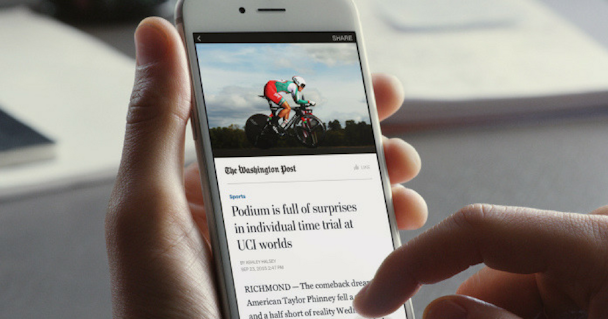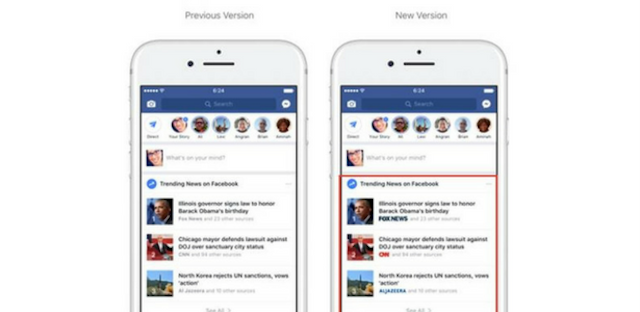Publishers welcome Facebook's move to fight fake news by adding logos to links
Facebook has played its latest card in the assault against fake news, revealing that it will begin to display publisher logos next to links posted within its walls.

The tool was devised as part of the Facebook Journalism Project
Initially, logos will be featured adjacent to content viewable in Facebook’s topical Trending bar as well as in search results on the site – with eventual plans to extend the tool to anywhere people can view news on the platform, meaning logos are likely to feature in users’ news feeds at some point.
This means an article featured in the trending section from the New York Times, for example, would feature the NYT hallmark, or that a BuzzFeed article would be immediately reconigsable by the logo alone.
Publishers wishing to partake will have to upload their logos to Facebook manually.
Adding logos to links will arguably allow readers to better decide what they read and share on Facebook based on the credibility and status of the source. Publishers welcomed the update, with Anna Bateson, chief customer officer at the Guardian, saying it was imperative in the modern digital landscape.
“Helping readers recognise the source of the journalism they're reading is vital if we are to build and hold trust in the news ecosystem,” she said. “We hope it is a positive sign for progress across a range of other critical issues the industry is discussing with them."
CNN is another Facebook partner that said it will be advantageous to everyone involved to amplify and credit sources.
“When people see those three red letters, they know it symbolizes trusted, reliable and real news, so any effort by Facebook to emphasis the brand and credibility of a story benefits the audience as well as the publishers," said executive producer of social and emerging media, Samantha Barry.
The move from the company follows on from a recent report from the Pew Research Centre which found that just 56% of respondents could recall the source of a new link they viewed on social networks. However, the play is about much more than boosting brand recognition - coming amid a wider debate around Facebook’s role in filtering out fake news.
The tool was devised as part of the Facebook Journalism Project, which seeks to strengthen the firm's ties to the industry. The initiative was set up amid a furore around fake news in the wake of the US election, and as well as finding ways to crack the issue seeks to liase with news outlets around how Facebook can better meet their journalistic and business needs - rather than compete with them.

Facebook has been working hard to highlight what it is doing to solve the fake news conumdrum. Earlier this year it ran a series of print ads in national French and British newspapers offering readers tips on how to spot a phony story. Before the summer, the social network announced that users in 14 countries would be served ‘educational notices’ at the top of their news feeds, directing them to an online hub containing the same tips. It has also inked deals with a number of fact-checking organisations.
Ahead of the UK general election, MP and chair of the culture, media and spot committee, Damian Collins, warned the social network it must do more to purge fake news, saying such material posed a threat to the “integrity of democracy”.
While Facebook's hopes to enhance people's awareness so they are less likely to spread misinformation by putting logos next to articles, the issue is still a contentious one for shareholders as well as journalists. A group of investors recently asked the social media giant to issue a report about the impact the issue is having on the company and society.

